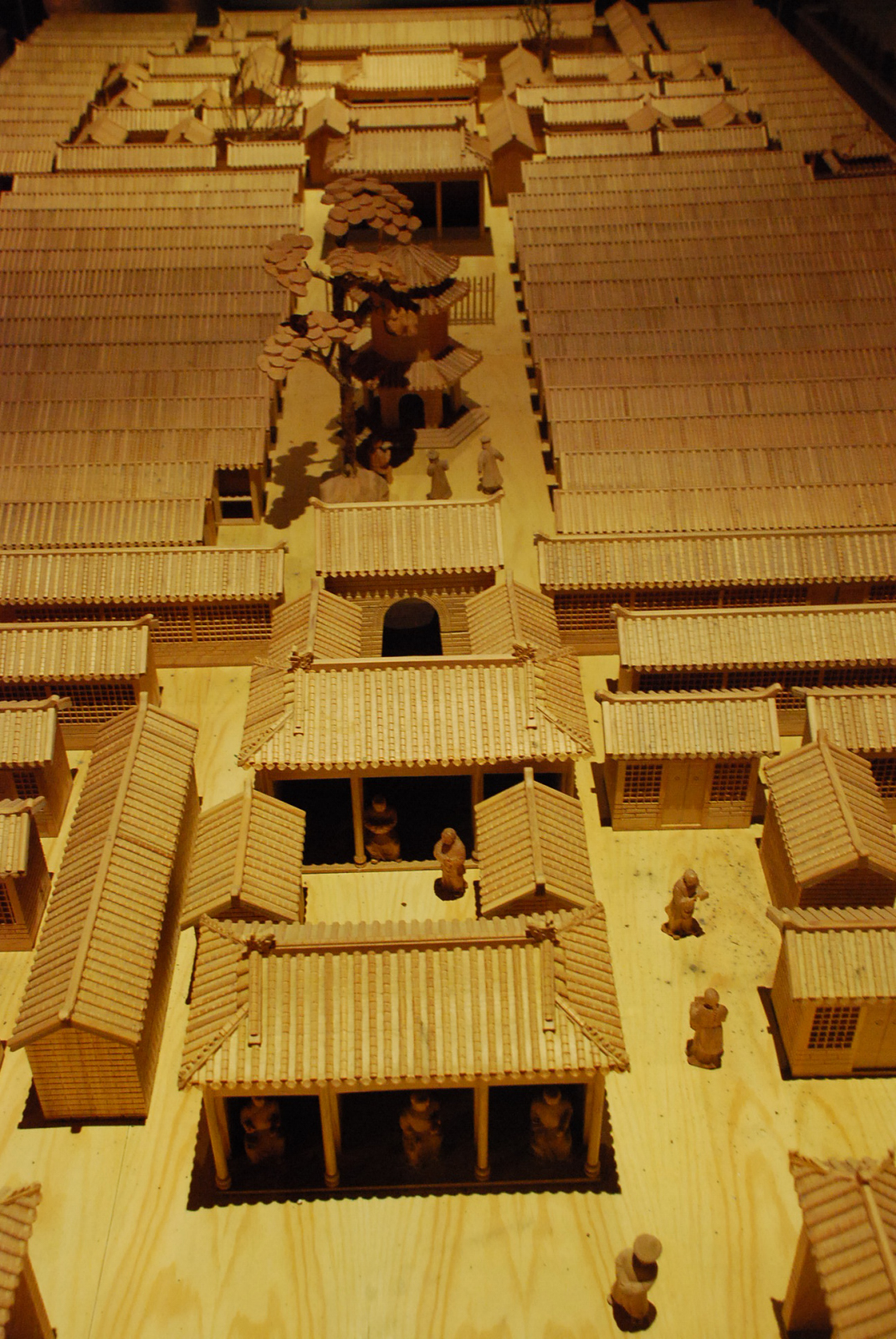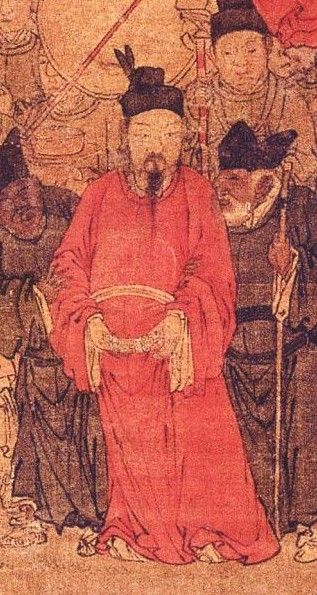|
Jia Dan
Jia Dan (, 730 – 805), courtesy name Dunshi () and formally Duke Yuanjing of Wei (), was a Chinese cartographer, military general, and politician from Cangzhou, Hebei during the Tang dynasty. Background Jia Dan was born in 730, during the reign of Emperor Xuanzong. His family was from Cang Prefecture (滄州, in modern Cangzhou, Hebei)''Old Book of Tang''vol. 138. and traced its ancestry to the Han dynasty official Jia Yi, through officials of Cao Wei, Jin dynasty (266–420), Liu Song, Southern Qi, Liang dynasty, Northern Qi, Northern Zhou, Sui dynasty, and Tang dynasty. Both his grandfather Jia Zhiyi () and father Jia Yuanyan () served as county-level officials. Career Early career During Emperor Xuanzong's ''Tianbao'' era (742–756), Jia Dan passed the imperial examinations and was made the sheriff of Linqing County (臨清, in modern Liaocheng, Shandong). After he submitted suggestions on the matters of the times to Emperor Xuanzong, he was moved to be the sheriff ... [...More Info...] [...Related Items...] OR: [Wikipedia] [Google] [Baidu] [Amazon] |
Courtesy Name
A courtesy name ( zh, s=字, p=zì, l=character), also known as a style name, is an additional name bestowed upon individuals at adulthood, complementing their given name. This tradition is prevalent in the East Asian cultural sphere, particularly in China, Japan, Korea, Taiwan and Vietnam. Courtesy names are a marker of adulthood and were historically given to men at the age of 20, and sometimes to women upon marriage. Unlike art names, which are more akin to pseudonyms or pen names, courtesy names served a formal and respectful purpose. In traditional Chinese society, using someone's given name in adulthood was considered disrespectful among peers, making courtesy names essential for formal communication and writing. Courtesy names often reflect the meaning of the given name or use homophonic characters, and were typically disyllabic after the Qin dynasty. The practice also extended to other East Asian cultures, and was sometimes adopted by Mongols and Manchu people, Manchus ... [...More Info...] [...Related Items...] OR: [Wikipedia] [Google] [Baidu] [Amazon] |
Imperial Examination
The imperial examination was a civil service examination system in History of China#Imperial China, Imperial China administered for the purpose of selecting candidates for the Civil service#China, state bureaucracy. The concept of choosing bureaucrats by merit rather than by birth started Imperial examination in Chinese mythology, early in Chinese history, but using written examinations as a tool of selection started in earnest during the Sui dynasty (581–618), then into the Tang dynasty (618–907). The system became dominant during the Song dynasty (960–1279) and lasted for almost a millennium until its abolition during the late Qing reforms, late Qing dynasty reforms in 1905. The key sponsors for abolition were Yuan Shikai, Yin Chang and Zhang Zhidong. Aspects of the imperial examination still exist for entry into the civil service of both China and Taiwan. The exams served to ensure a common knowledge of writing, Chinese classics, and literary style among state officials. ... [...More Info...] [...Related Items...] OR: [Wikipedia] [Google] [Baidu] [Amazon] |
Emperor Daizong Of Tang
Emperor Daizong of Tang (11 November 726According to Daizong's biography in the ''Old Book of Tang'', he was born on the 13th day in the 12th month of the 14th year of the Kaiyuan era of Tang Xuanzong's reign. This date corresponds to 11 Nov 726 in the Gregorian calendar.(「开元十四年十二月十三日生于东都上阳宫。」) ''Old Book of Tang'', vol. 11. – 10 June 779According to Daizong's biography in the ''Old Book of Tang'', he died on the evening of the ''xinyou'' day in the 5th month of the 14th year of the Dali era of his reign. This date corresponds to 10 June 779 in the Gregorian calendar.(「(大历十四年五月)辛酉,...。是夕,上崩于紫宸之内殿。」) ''Old Book of Tang'', vol. 11.), personal name Li Yu (name changed in 758 after being created crown prince), né Li Chu (), was an Emperor of China, emperor of the Chinese Tang dynasty. Emperor Daizong was the eldest son of Emperor Suzong of Tang, Emperor Suzong – the first emperor of the ... [...More Info...] [...Related Items...] OR: [Wikipedia] [Google] [Baidu] [Amazon] |
Linfen
Linfen () is a prefecture-level city in the southwest of Shanxi province, People's Republic of China, China, bordering Shaanxi province to the west. Linfen City is located in the southern part of Shanxi Province, with the remaining branches of Taiyue to the east and the Luliang Mountains to the west. In the middle is a vast river valley plain, with the Fen River mainstream running across the north and south, and the land on both sides is fertile. It is situated along the banks of the Fen River. It has an area of and according to the Seventh National Population Census of the People's Republic of China, 2020 Census, a population of 3,976,481 inhabitants of which 959,198 live in the built-up (or metro) area made up of Yaodu District, Yaodu urban district. The GDP of Linfen ranked second in Shanxi, Shanxi Province. It was known as Pingyang ( zh, labels=no, t=平陽) during the Spring and Autumn period. In 2006, the American Blacksmith Institute listed Linfen as one of the ten most po ... [...More Info...] [...Related Items...] OR: [Wikipedia] [Google] [Baidu] [Amazon] |
Zizhi Tongjian
The ''Zizhi Tongjian'' (1084) is a chronicle published during the Northern Song dynasty (960–1127) that provides a record of Chinese history from 403 BC to 959 AD, covering 16 dynasties and spanning almost 1400 years. The main text is arranged into 294 scrolls (), each equivalent to a chapter—totaling around 3 million Chinese characters. In 1065, Emperor Yingzong of Song commissioned his official, Sima Guang (1019–1086), to lead a project to compile a Universal history (genre), universal history of China, and granted him funding and the authority to appoint his own staff. His team took 19 years to complete the work and in 1084 it was presented to Emperor Yingzong's successor Emperor Shenzong of Song. It was well-received and has proved to be immensely influential among both scholars and the general public. Endymion Wilkinson regards it as reference quality: "It had an enormous influence on later Chinese historical writing, either directly or through its many a ... [...More Info...] [...Related Items...] OR: [Wikipedia] [Google] [Baidu] [Amazon] |
Emperor Suzong Of Tang
Emperor Suzong of Tang (''yihai'' day, 711 – 16 May 762; r. 756 – 762), personal name Li Heng, né Li Sisheng (), known as Li Jun () from 725 to 736, known as Li Yu () from 736 to 738, known briefly as Li Shao () in 738, was an emperor of the Chinese Tang dynasty and the son of Emperor Xuanzong. Suzong ascended the throne after his father fled to Sichuan during the An Lushan Rebellion in 756; Li Heng himself had fled in the opposite direction, to Lingwu, where he was declared emperor by the army. Much of Emperor Suzong's reign was spent in quelling the aforementioned rebellion, which was ultimately put down in 763 during the reign of his son Emperor Daizong. During Emperor Suzong's reign, the tradition of eunuchs becoming top-ranked officials began, with Li Fuguo becoming the commander of the imperial guards and possessing nearly absolute power near Emperor Suzong's reign. Li Fuguo allied and befriended Emperor Suzong's wife, Empress Zhang, at the beginning of Emp ... [...More Info...] [...Related Items...] OR: [Wikipedia] [Google] [Baidu] [Amazon] |
Taiyuan
Taiyuan; Mandarin pronunciation: (Jin Chinese, Taiyuan Jin: /tʰai˦˥ ye˩˩/) is the capital of Shanxi, China. Taiyuan is the political, economic, cultural and international exchange center of Shanxi Province. It is an industrial base focusing on energy and heavy chemicals. Throughout its long history, Taiyuan was the capital or provisional capital of many dynasties in China, hence the name ( zh, s=龙城, p=Dragon City, labels=no). As of 2021, the city governs 6 districts, 3 counties, and hosts a county-level city with a total area of 6,988 square kilometers and a permanent population of 5,390,957. Taiyuan is located roughly in the centre of Shanxi, with the Fen River flowing through the central city. Etymology and names The two Chinese characters of the city's name are (, "great") and (, "plain"), referring to the location where the Fen River leaves the mountains and enters a relatively flat plain. Throughout its long history, the city had various names, including ... [...More Info...] [...Related Items...] OR: [Wikipedia] [Google] [Baidu] [Amazon] |
Jiedushi
The ''jiedushi'' (, Old Turkic: Tarduş) or jiedu, was a regional military governor in China; the title was established in the Tang dynasty and abolished in the Yuan dynasty. The post of ''jiedushi'' has been translated as "military commissioner", " legate", or "regional commander". Originally introduced in 711 to counter external threats, the ''jiedushi'' were posts authorized with the supervision of a defense command often encompassing several prefectures, the ability to maintain their own armies, collect taxes and promote and appoint subordinates. Powerful ''jiedushi'' eventually became '' fanzhen'' rulers (''de facto'' warlords) and overrode the power of the central government of Tang. An early example of this was An Lushan, who was appointed ''jiedushi'' of three regions, which he used to start the An Lushan Rebellion that abruptly ended the golden age of the Tang dynasty. Even after the difficult suppression of that rebellion, some ''jiedushi'' such as the Three Fanz ... [...More Info...] [...Related Items...] OR: [Wikipedia] [Google] [Baidu] [Amazon] |
Chang'an
Chang'an (; zh, t=長安, s=长安, p=Cháng'ān, first=t) is the traditional name of the city now named Xi'an and was the capital of several Chinese dynasties, ranging from 202 BCE to 907 CE. The site has been inhabited since Neolithic times, during which the Yangshao culture was established in Banpo, in what is now the city's suburbs. Furthermore, in the northern vicinity of modern Xi'an, Qin Shi Huang of the Qin dynasty, China's first emperor, held his imperial court and constructed his massive mausoleum guarded by the Terracotta Army. From its capital at Xianyang, the Qin dynasty ruled a larger area than either of the preceding dynasties. The imperial city of Chang'an during the Han dynasty was located northwest of today's Xi'an. During the Tang dynasty, the area that came to be known as Chang'an included the area inside the Ming Xi'an fortification, plus some small areas to its east and west, and a substantial part of its southern suburbs. Thus, Tang Chang'an was eight t ... [...More Info...] [...Related Items...] OR: [Wikipedia] [Google] [Baidu] [Amazon] |
Shanxi
Shanxi; Chinese postal romanization, formerly romanised as Shansi is a Provinces of China, province in North China. Its capital and largest city of the province is Taiyuan, while its next most populated prefecture-level cities are Changzhi and Datong. Its one-character abbreviation is (), after the Jin (Chinese state), state of Jin that existed there during the Spring and Autumn period (). The name ''Shanxi'' means 'west of the mountains', a reference to its location west of the Taihang Mountains. Shanxi borders Hebei to the east, Henan to the south, Shaanxi to the west and Inner Mongolia to the north. Shanxi's terrain is characterised by a plateau bounded partly by mountain ranges. Shanxi's culture is largely dominated by the ethnic Han Chinese, Han majority, who make up over 99% of its population. Jin Chinese is considered by some linguists to be a distinct language from Mandarin and its geographical range covers most of Shanxi. Both Jin and Mandarin are spoken in Shanxi. ... [...More Info...] [...Related Items...] OR: [Wikipedia] [Google] [Baidu] [Amazon] |






